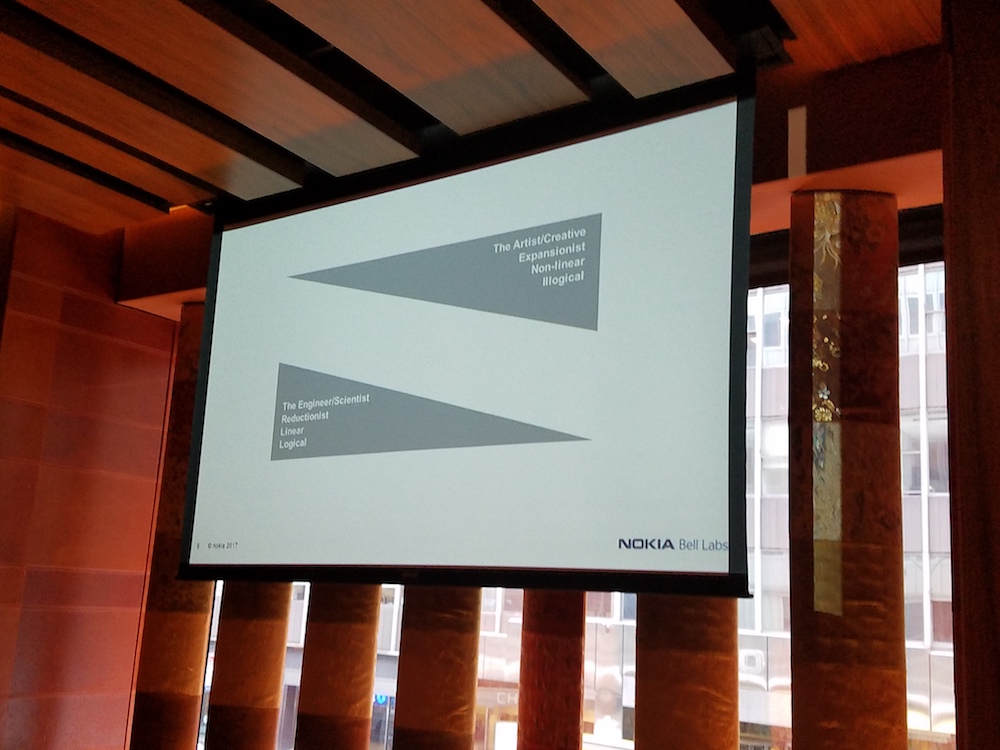Taking place in the modern, trendy space of the Japanese restaurant, Zuma, the Moving Forward Conference held its stateside recently. This conference prides itself on its ability to act as a network to converge various industry leaders under one roof to discuss the trajectory of technological trends and ideas. There were a diverse group of speakers ranging from lawyers to CEOS to Editor-in-Chiefs. Moving Forward excelled in its ability to cultivate audience interaction by allotting speakers a five minute Q&A to answer audience questions via sli.do. Many of the presenters relayed their expertise in a remarkably precise and engaging fashion, which highly distinguished the Moving Forward Conference from your typical, stuffy conference.
While many people, myself included, traditionally think of tech as an industry that rewards logic and higher mathematical, cognitive functions, it was rather refreshing to listen to Domhnaill Hernon’s presentation: “The Future of Innovation-Fusing the Arts and Technology”. Hernon, Head of Innovation Incubation & Experiments in Arts and Technology at the Nokia Bell Labs, delivered a salient message regarding the subsequent growth of technology. His message emphasized that technology needs diversity and is overwhelmingly “male, pale, and stale”, and he pointed out that extreme levels of diversity result in groundbreaking innovation. However, he finds the buzzword “innovation” troublesome and overused. Hernon regards it as a commoditized term that means nothing; just because you label something as “innovative” doesn’t mean it is. He accompanied this notion with pictures of smartphones from various competing brands. For the most part, all of the phones looked the same and operated the same. So, what is innovation?
Hernon redefines innovation by breaking it down into smaller components. Innovation is meant to be inventive (new, distinct) and impactful (changing the world), but in order for this definition to be fully fulfilled, it’s imperative that the Artist/Creative and the Engineer/Scientist fuse their genius and collaborate. He expands upon this idea by applying the Theory of Adjacent Possible.
Hernon explains this theory by saying that people who look alike and think alike will come up with the same ideas, and as a result, an individual -or group- is inherently limiting his or her “innovation opportunity”, which is why diversity in tech is paramount to recognize unforeseen opportunity. The collaboration of The Artist/Creative and The Engineer/Scientist represents an opportunity to expand the adjacent possible.
Hernon believes that there are so many barriers between people of different race, culture, religions, and politics because humans are terrible as a species as to how to communicate. He points out the comical paradox of technology in the 21st century is that we have so many modes and ways of connecting and communicating with one another, yet in the “real world”, we distance ourselves from one another. So, how can we use tech to create real and emotional connections between humans? The overwhelming answer seems to be through diversity and through the collaboration of the creative and the scientist.



